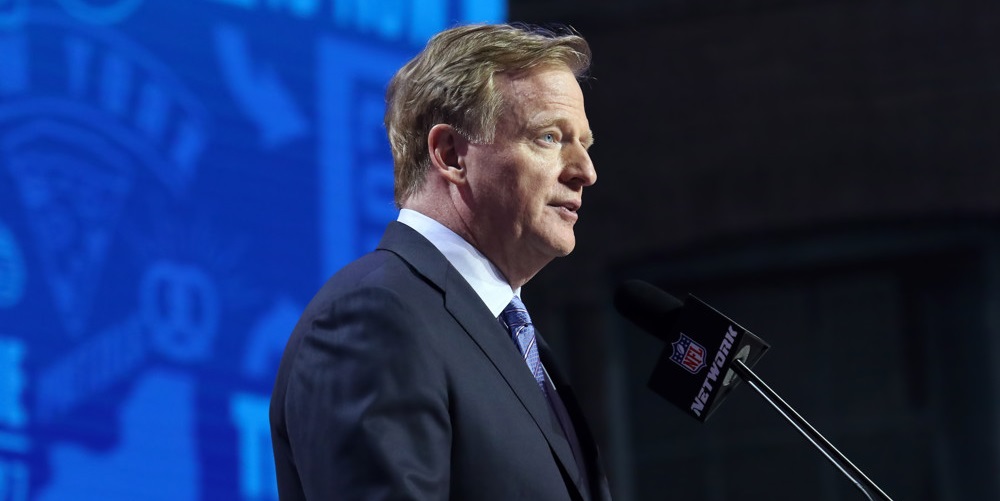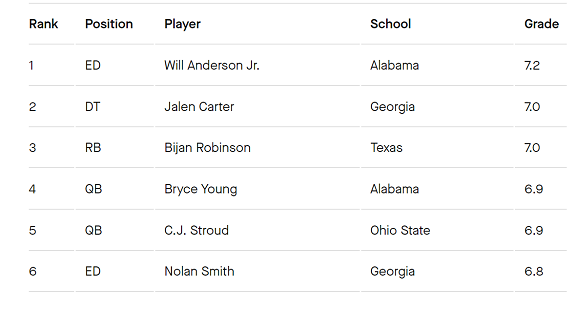The combine is a distant memory, pro days are all but over, and it seems all that’s left to do is twiddle our thumbs as teams make their final preparations for the NFL Draft. But, arguing among ourselves about quarterbacks is a rich tradition, so perhaps that is the best way to occupy our time as we countdown to April 26.
From an analytical perspective, the search for QB1 begins and ends with Kyler Murray, who dominated the advanced stats leaderboards in our inaugural Football Rookie Handbook. Murray is widely expected to go first overall to the Arizona Cardinals, but prognosticators are less certain about how the rest of the chips will fall.
Three other quarterbacks – Ohio State’s Dwayne Haskins, Missouri’s Drew Lock, and Duke’s Daniel Jones – are also receiving first round consideration, and there’s no shortage of potential landing spots. The Giants, Broncos, Bengals, Dolphins, and Redskins are franchises with long-term uncertainty at the position who pick within the top half of the first round.
From an Expected Points Added (EPA)/attempt perspective, Haskins (0.3) is head and shoulders above Lock (0.13) and Jones (-0.04). He’s also considerably more accurate, having delivered an on-target ball on 76% of his throws in 2018, whereas roughly 30% of passes thrown by Lock and Jones were uncatchable or required an adjustment.
Haskins’ detractors will point to his low average depth of target (ADOT) of 7.9 yards and cite that he made lower-difficulty throws, but he targeted shallow routes at a rate comparable to the other two. Although Lock (8.8) and Jones (8.2) had higher ADOTs, their throws traveled five yards or less at virtually the same rate as Haskins:
| Quarterback | Shallow Throw Rate |
| Haskins | 48.5% |
| Jones | 48.4% |
| Lock | 47.4% |
Perhaps this is more symptomatic of a concern about Haskins’ mechanics as they pertain to the deep ball. However, our metrics indicate that he was still one of the better passers in the nation at throwing catchable balls to depths of at least 20 yards. Out of 151 college quarterbacks who threw 20 or more such passes in 2018, Haskins ranked 15th at 65%.
That’s a hair better than Alabama’s Tua Tagovailoa, who is, for all intents and purposes, the incumbent 2020 QB1. It also represents a substantial demarcation from Jones, who ranked 47th at 57%. That said, he ranked lower than Lock, whose biggest selling point may be his vertical passing acumen. The Missouri signal-caller ranked 6th in the country by throwing a catchable deep ball 68% of the time.
By this point, you’ve probably noticed that Jones doesn’t compare favorably to his counterparts, and his case is a curious one. First and foremost, it should be noted that he played most of the season with a plate and screws in his left clavicle to fuse together a broken collarbone he suffered on September 8. Nevertheless, the Blue Devil captain played himself into first round consideration and is regarded by some as the most pro-ready quarterback in the draft. However, the numbers don’t necessarily back that assertion up.
Jones was primarily asked to execute 0/1-step drops, RPOs, screens, and rollouts, concepts that generally indicate simpler, or even singular, reads. He did so on a whopping 73% of his dropbacks, the eighth-highest rate among 164 quarterbacks who dropped back at least 100 times in 2018.
To give you an idea of how that might translate to the NFL, Nick Foles had the highest rate of 43 NFL quarterbacks at 58%. Only two other quarterbacks did so at a rate above 50%. The average rate among quarterbacks who dropped back at least 100 times was 34%.
Fit will be important for all of these quarterbacks, but it seems that Jones’ projection requires a bigger leap of faith than the others. Whereas the numbers can point to ways in which Haskins and Lock win, the statistical picture for Jones is cloudy. For a more in-depth look at each of these quarterbacks, the aforementioned Football Rookie Handbook has comprehensive stats and scouting reports on each and can be purchased at this link.


